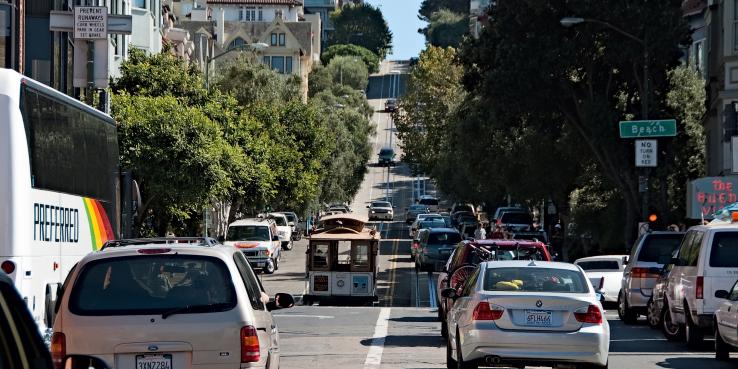Beginning this month, Californians will have a new option for auto insurance. It’s called Pay As You Drive (PAYD), and it could save money and reduce our impact on the environment at the same time.
Traditional auto insurance policies charge customers in a lump sum and do not price risk according to driving volume. There have been attempts by insurance companies to incorporate driving volume into insurance rates, but these types of plans are based on estimated mileage only. In contrast, PAYD bills consumers for the amount that they actually drive.
California insurance regulations that went into effect this month will now allow insurance companies to check odometer readings themselves, hire vendors such as smog-check technicians and car dealers to record mileage, track mileage through the GM OnStar system, or install automatic mileage recording devices.
PAYD policies are already being offered in California by State Farm and AAA, with potentially more to come in the future through Allstate and Progressive. Customers can receive insurance discounts for self-reporting their odometer readings, or allowing their insurance provider to automatically access mileage data if their vehicle has an active OnStar system. OnStar, an onboard GPS and emergency service provider offered on select GM vehicles, has the capability to record vehicle metrics such as odometer readings. The logic seems to be straightforward – driving carries an inherent risk, and insurance companies are incentivized to find a way to reward customers financially for driving less.
Under State Farm’s policy, which bases premiums on reported mileage, customers who seldom drive may see an annual premium reduction of up to 45 percent. Other pricing models exist in several other states for PAYD: MileMeter of Dallas, TX allows customers to select a mileage bracket and pay for any excess miles driven. The value of unused miles can be credited towards a policy renewal.
The expectation is that motorists who drive fewer miles will be drawn to PAYD policies. Those who wish to reduce premiums may be inclined to drive less, either by carpooling more often or riding transit.
A report published by SPUR in 2009 shows how PAYD has the potential to substantially curb greenhouse gas emissions. SPUR projects that if all Bay Area drivers were moved to PAYD policies, the total vehicle miles traveled by drivers would be reduced by up to 8%.
This would result in a potential carbon savings of up to 1.073 million metric tons in the greater Bay Area. Even if only 10% of drivers switch to PAYD, a more feasible rate of conversion, it could result in savings of 100,000 metric tons per year. SPUR has endorsed expansion of PAYD as one of the best options to reduce emissions regionally.
All this, and it doesn’t cost the taxpayer a dime during California’s ongoing fiscal crisis.
